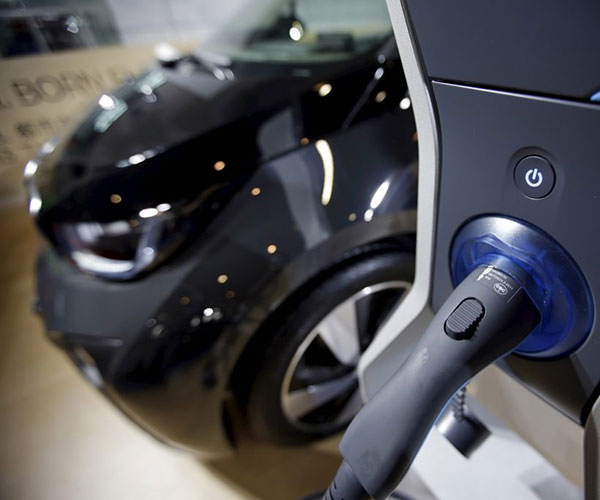- Can bidirectional charging revolutionize renewable energy?
- The technology is proving effective in small-scale pilots, but its scalability remains a challenge.
- By enabling electric vehicles to act as distributed energy resources, bidirectional charging could play a key role in creating a stable, reliable, and sustainable energy system for the future.
The future of renewable energy is promising, but it’s not without its challenges.
One of the biggest challenges is finding ways to store and distribute energy effectively. Bidirectional charging is a promising solution that allows electric vehicles (EVs) to consume energy and send energy back to the grid. However, while bidirectional charging has been shown to be effective in small-scale pilots, its ability to scale is still in question.
Bidirectional charging is a two-way flow of energy between EVs and the grid. Instead of just charging the car’s battery, the technology enables the battery to send energy back to the grid when it’s not being used.
This means that EVs can not only use energy from the grid to charge their batteries but also act as a distributed energy resource (DER) that can help balance the grid’s supply and demand.
The potential benefits of bidirectional charging are numerous.
It can help reduce the need for expensive and environmentally damaging stationary battery storage solutions, as EVs can provide storage capacity. It can also help to reduce the strain on the grid during peak demand periods by allowing energy to be sent back to the grid during off-peak times. Additionally, it can help to support the integration of renewable energy sources by providing a way to store and distribute energy generated by sources like wind and solar.
Several pilot projects have been launched around the world to test the viability of bidirectional charging.
For example, Nissan has partnered with the Italian utility Enel to test bidirectional charging in the United Kingdom, while Honda has partnered with the Ohio-based electric utility American Electric Power to test bidirectional charging in the United States.
In Japan, the government has set a target of having bidirectional charging infrastructure installed at 50% of EV charging stations by 2030.
These pilot projects have shown that bidirectional charging is technically feasible and can provide benefits to both EV owners and the grid.
For example, a pilot project in Denmark found that bidirectional charging reduced the cost of EV ownership by up to 50%, while also helping to stabilize the grid. Similarly, a pilot project in the United States found that bidirectional charging could help to reduce the cost of grid upgrades needed to accommodate EV charging.
However, while bidirectional charging has been shown to be effective in small-scale pilots, there are still significant challenges to scaling up the technology.
One of the biggest challenges is the need for standardized communication protocols between EVs and the grid. Currently, there are several different protocols in use, which can make it difficult for grid operators to communicate with different types of EVs. This can lead to interoperability issues that can make it difficult to scale up bidirectional charging infrastructure.
Another challenge is the need for robust cybersecurity measures. Bidirectional charging involves sending data and energy back and forth between EVs and the grid, which can make the system vulnerable to cyber attacks. Without strong cybersecurity measures in place, bidirectional charging infrastructure could be a liability rather than an asset.
Additionally, there are technical challenges to overcome, such as developing batteries that can withstand the stress of bidirectional charging and developing efficient power electronics to manage the flow of energy between EVs and the grid.
Despite these challenges, the potential benefits of bidirectional charging are too great to ignore.
In addition to reducing the cost of EV ownership and supporting the integration of renewable energy sources, bidirectional charging can also help to improve the reliability and resiliency of the grid. By enabling EVs to act as DERs, bidirectional charging can help to balance the grid during periods of high demand or supply shortages, reducing the risk of blackouts and brownouts.
To unlock the potential of bidirectional charging, a concerted effort is needed from governments, utilities, and the automotive industry.
Governments can play a key role in setting standards and regulations that encourage the deployment of bidirectional charging infrastructure, while utilities can invest in the necessary infrastructure and develop innovative business models to support bidirectional charging.
The automotive industry can also play a critical role by developing EVs with bidirectional charging capabilities and collaborating with utilities to ensure interoperability. With the right policies, investments, and collaborations, bidirectional charging can become a key component of a stable, reliable, and sustainable energy system for the future.
Bidirectional charging has the potential to revolutionize the way we store and distribute energy.
The technology has been proven effective in small-scale pilots, but its ability to scale is still trapped in the pilot stage. Addressing the challenges related to interoperability, cybersecurity, battery technology, and power electronics will be crucial to unlocking the potential of bidirectional charging. By enabling EVs to act as DERs, bidirectional charging can help to stabilize the grid, reduce the cost of EV ownership, and support the integration of renewable energy sources.
To achieve this potential, it will take a collaborative effort between governments, utilities, and the automotive industry to develop standards and regulations that encourage the deployment of bidirectional charging infrastructure. With the right investment and support, bidirectional charging could play a key role in creating a more sustainable and resilient energy system for the future.














Comments